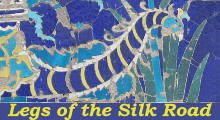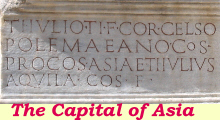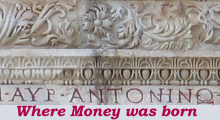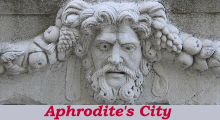

What's New!
Detailed Sitemap
All images © by Roberto Piperno, owner of the domain. Write to romapip@quipo.it. Text edited by Rosamie Moore.
|
 - Khiva - page two - Main Monuments - Khiva - page two - Main Monuments
(detail of a decoration at Abdoul Aziz Khan Medrese in Bukhara)
According to the Uzbek Institute of Restoration there are 54 historical monuments within the walls of the old town. These include 23 medreses, 6 mosques, 1 caravanserai, 6 mausoleums and one working hammam. There are 290 listed old houses.
Streets near Tach Kaouli Palace
The large majority of the population of Khiva lives outside the old town,
but the government is trying to repopulate it.
Islam Khodja Minaret and Medrese
The development of Khiva followed that of Samarkand and
Bukhara and its monuments were influenced by those existing there.
The very tall minaret built for Islam Khodja Medrese was a sort of local response to Bukhara's Kalon minaret. Together with the adjoining medrese it can be regarded as the last monument of the Khanate because it was built in 1910.
Pakhlavan Mahmoud Mausoleum
It is difficult to summarize the personality of Mahmoud Pakhlavan; he was a Persian Sufi teacher, but also a gymnast and a wrestler known for his strength as the Hercules of Asia.
He is attributed the following verse: "Learn modesty, if you desire knowledge" which is recited at meetings of Varzesh-e Pahlavani (Sport of the Heroes), which is still popular in Iran.
Pakhlavan Mahmoud Mausoleum: detail of the portal
In Khiva Pakhlavan Mahmoud (who died in 1325) was regarded as a sort of patron saint and the last khans chose to build their burial chamber next to that of Pakhlavan.
Pakhlavan Mahmoud Mausoleum: details
The current complex of buildings is mainly the result of an 1810 expansion, but additions continued until very recently.
It is usual for newlyweds to pray briefly at the Pakhlavan's tomb.
Kalta Minor and Mohammed Amin Khan Medrese
In the XIXth century Khiva was the capital of a relatively small nation surrounded by hostile tribes and threatened by colonial powers. Its links with the outside world were very limited and yet in 1852
Mohammed Amin Khan decided to build a new medrese next to which he planned to erect the highest minaret of the world. In 1855 the minaret was still under construction when the Khan was assassinated; the medrese was completed but not the minaret, so that Khiva has the largest uncompleted minaret of the world (which resembles a gigantic penholder).
Jamia Mosque
The Jamia (Friday) Mosque of Khiva is a very large one-storied building; the roof of the main prayer hall is supported by 218
carved wooden columns. The mosque was almost entirely reconstructed in 1788-89. The leaning minaret dates to that period too.
With the exception of Kalon in Bukhara the construction technique used for minarets in Central Asia did not stand the test of time.
Earthquakes had a major role in damaging them, but probably the key cause resided in the bricks not having the required level of strength to resist the pressure of a tall building.
Matinyaz Divanbegi Medrese and Anoucha Khan Hammam
Matinyaz was the divanbegi (high officer/advisor) of Mohammed Rakhim II Khan of Khiva between 1864 and 1910. The relatively small medrese he built near the citadel has been turned into a restaurant.
The hammams named after Prince Anoucha are among the oldest monuments of Khiva. They were built in 1647 and they are still working.
Allakouli Khan Medrese (1835)
The Khans of Khiva competed in associating themselves with the construction of a large medrese. A large part of the old town, especially the southern one, is almost entirely occupied by medreses and other religious buildings. The bazaar was located outside Palvan Darvoza, the eastern gate of the old town.
Mohammed Rakhim Khan II Medrese seen from bastion Akcickh-Bobo
Mohammed Rakhim Khan II wanted to see his own medrese from his palace in the citadel. It was built in 1871 and shortly after its completion, the Khan's
grandeur ambitions were dramatically curtailed: in 1873 he surrendered to the Tsar's troops; some of his properties were confiscated, he had to pay a yearly compensation for the Russian protection and the lucrative slave market was disbanded.
Courtyard of Mohammed Rakhim Khan II Medrese
In return for his acceptance of the Russian protectorate, Mohammed Rakhim Khan II had the opportunity to travel to St. Petersburg. He was very impressed by the early use of electricity he saw there.
Unfortunately the appliances he brought home did not work, because there was no electricity in Khiva.
Tach Kaouli Palace harem courtyard: (left) iwans of the (four) wives; (right) base of a column
In the 1830's Ala Kuli Khan built a second royal residence at the eastern end of the old town. Kaouli (or haouli) was the name given to fortified houses in Khiva's countryside, Tach (or Tash) means stone.
From the outside the new residence was given the appearance of a fortress while its courtyards were lavishly decorated.
Tach Kaouli Palace harem courtyard - side where the concubines lived
In 1875 Colonel Frederick Gustavus Burnaby, an English traveller and soldier,
reached Khiva to ascertain what had really happened to the Khanate since the Russian occupation. He was warmly received by the Khan who hated the Russians.
He was impressed by the number of guards who protected the privacy of the harem. He also noticed that although the Khan had four wives and many concubines some good-looking boys of an effeminate appearance, with long hair streaming down their shoulders, and dressed a little like women, lounged about, and seemed to have nothing in particular to do.
Tach Kaouli Palace - Ichrat Khaouli - Reception Hall
Burnaby so described his reception by the Khan: After I had been kept waiting for about a quarter of an hour, a messenger entered the room and told that the
Khan was disengaged and ready to receive me. Here we found the reception hall, a large tent of a dome-like shape. I was motioned to enter by lifting up a fold of thick cloth. On doing so I found myself face to face with the celebrated Khan, who was reclining against some pillows or cushions, and seated on a handsome
Persian rug, warming his feet by a circular hearth filled with burning charcoal.
Tach Kaouli Palace - Arz Khaouli - Justice Hall and a traditional tent
Go to Khiva - page one
Introductory page
Samarkand
Bukhara
Chakhrisabz

SEE THESE OTHER EXHIBITIONS (for a full list see my detailed index).
  
|